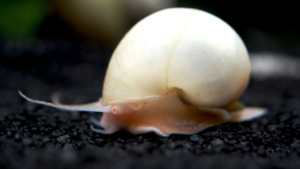When you plan to have pet fish, you’ll want a fish tank heater. Fish aren’t really cold-blooded like some people think; they only can’t maintain their own body temperature. In their natural environment, water and sunlight provide the heat they need.
Even if the room where you retain your fish tank is well warm to you, the chances are good that it’s too cold for your fish, especially since water is harder to heat than air. So, for your fish tank, a heater can provide the heat your fish need to thrive.
Generally, your fish are healthy and comfortable in water that’s kept around 79 degrees Fahrenheit. You want to keep the water temperature as constant as possible. Fluctuating temperatures lead to stressed fish, and it isn’t a big step from stressed fish to sick fish.
Getting the correct size Heater
Fish tank heaters are rated by watts, for example, 75 watts, 150 watts, etc. The rule of thumb is 5 times the quantity of gallons of water in the fish tank for correct heating. so for a 25-gallon fish tank, you’ll need 5 times 25, or a 125-watt heater. If your fish tank is huge, 2 heaters might do a much better job than one. In these cases, divide the overall electric power you would like in half, and buy 2 heaters of the resulting lower amount. For example, a 50-gallon fish tank needs 5 times 50 watts of heating or a 250-watt heater. Instead of buying one 250-watt heater, you can use two 125-watt heaters.
The other thing that’s good regarding having 2 heaters is that if one fails, the remaining heater can keep the water temperature fairly even till you’re able to get another heater. This can be very useful once you have a lot of money invested in the fish (or other animals). If you have plenty of money invested in fish, it may be a good idea to have a backup heater on hand just in case.
Speaking of warmth, whatever kind of heater you use, you’ll want a separate thermometer to check the water temperature. This can be your early warning system for a heater that’s going bad or that something is happening in the tank that needs attention. Now, on to the heaters.
Immersible Heaters
The most popular and least expensive type of heater is called an immersible heater. These are usually tube-shaped and made of glass, plastic, or aluminum. They have a control at the top for setting the temperature and usually have a built-in thermostat. They’re positioned so that the highest of the control of the heater is on top of the waterline while the cylindrical part that wills the actual heating is underwater. Placing these close to the area where the water circulation begins or is strongest will help keep the right temperature throughout your tank and avoid hot spots.
There are some versions of immersible heaters called submersible heaters. These will go entirely underwater. Submersible heaters are effective and cheap. They’re a bit easier to camouflage if that’s a big issue for you.
Other Heater designs
There are 2 other styles of heaters that you may see online or in stores. They are the substrate heater and filter heater.
The substrate heater is put in below the substrate, that’s the rock, gravel, or sand you’re using in your fish tank. This kind of fish tank heater produces heating plants love it. These are the most popular style heaters in Europe. The downside of those heaters is that if you’ve got to repair or replace them, you’re going to have to take your entire fish tank down to get to them. Therefore, this is a good selection for installation in the initial set-up, but a lot more cumbersome to install in a tank that’s already up and running.
A filter heater is a special heating unit that’s placed inside the filter itself so that the water goes back to the tank heat and cleans. These heaters aren’t quite common and can be expensive.
Heater Safety Tips
Whatever kind of heater you select, keep these safety tips in mind.
– Heaters are electrical appliances and must be handled with proper care. Remember, electricity and water don’t combine.
– once it’s time to clean your tank, turn your heater off, disconnect it, and give it a minimum of 15 minutes to cool down. Heaters will crack if they experience a rapid change in temperature that is what would happen if you lowered the water level while the heater was still hot, or took a hot heater out of the water.
– If a heater is designed to be below the water, ensure it stays underwater by keeping your water level topped off.
– Ne’er touches a hot heater.




